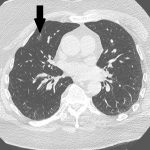Also, even though multiple inflammatory cytokines are dramatically increased in COVID-19 cytokine storm, the increase is often much less than the even higher levels found in cytokine storm from other causes. This may have implications for the potential effectiveness of agents currently undergoing clinical testing for cytokine storm related to COVID-19, some of which have previously been used to treat cytokine storm from MAS, HLH and other causes.1
A possible exception to this pattern is IL-33, which tends to be elevated in COVID-19 to a greater degree than it is in other causes of cytokine storm. Some have suggested that it might prove to be a key driver of the disease’s progression, even before the onset of cytokine storm itself.3 Dr. Caricchio shared that an IL-33 monoclonal antibody is about to enter clinical trials for COVID-19.
Clinical Trial Eligibility
Greater use of specific cytokine storm criteria might also be of benefit in research. Dr. Caricchio noted that many of the therapies in trials for COVID-19-related cytokine storm have lacked stringent stratification in their exclusion and inclusion criteria. He related that patients with viral pneumonia from COVID-19, as well as some form of increased inflammatory measure, such as C-reactive protein or ferritin, were usually found to be eligible, even though these indicators alone might not best capture the class of people these drugs might help.
This could impact overall outcomes of these clinical trials. “There is a subpopulation of individuals who went through these clinical trials who might have benefited, but the majority may have not, because they never fully developed hyperinflammatory syndrome,” said Dr. Caricchio.
Dr. Caricchio said one surprise about the widespread use of these therapies in this application has been their relative safety regarding rates of serious infection, which have been unexpectedly low. “We are very worried about this—we check for a lot of things before starting a monoclonal antibody,” he said, “and here, of course, we just had to give it.” This may be due to the relatively short window of time for which these therapies are used in a COVID-19 trial, in contrast to long-term use for a rheumatologic condition.
Mixed Interim Results
Interim results from several of these trials have been mixed, with some trials suggesting potential reduced time to recovery but others not showing any benefit. Results of many trials are still pending, and some new ones looking at tumor necrosis factor inhibitors and inhibitors of cytotoxic T-lymphocyte-associated protein 4 (CTLA-4) will be underway soon. “The number of biologics being used for COVID-19 is increasing by the day, and so are the reports that we get back from those clinical trials,” said Dr. Caricchio.



